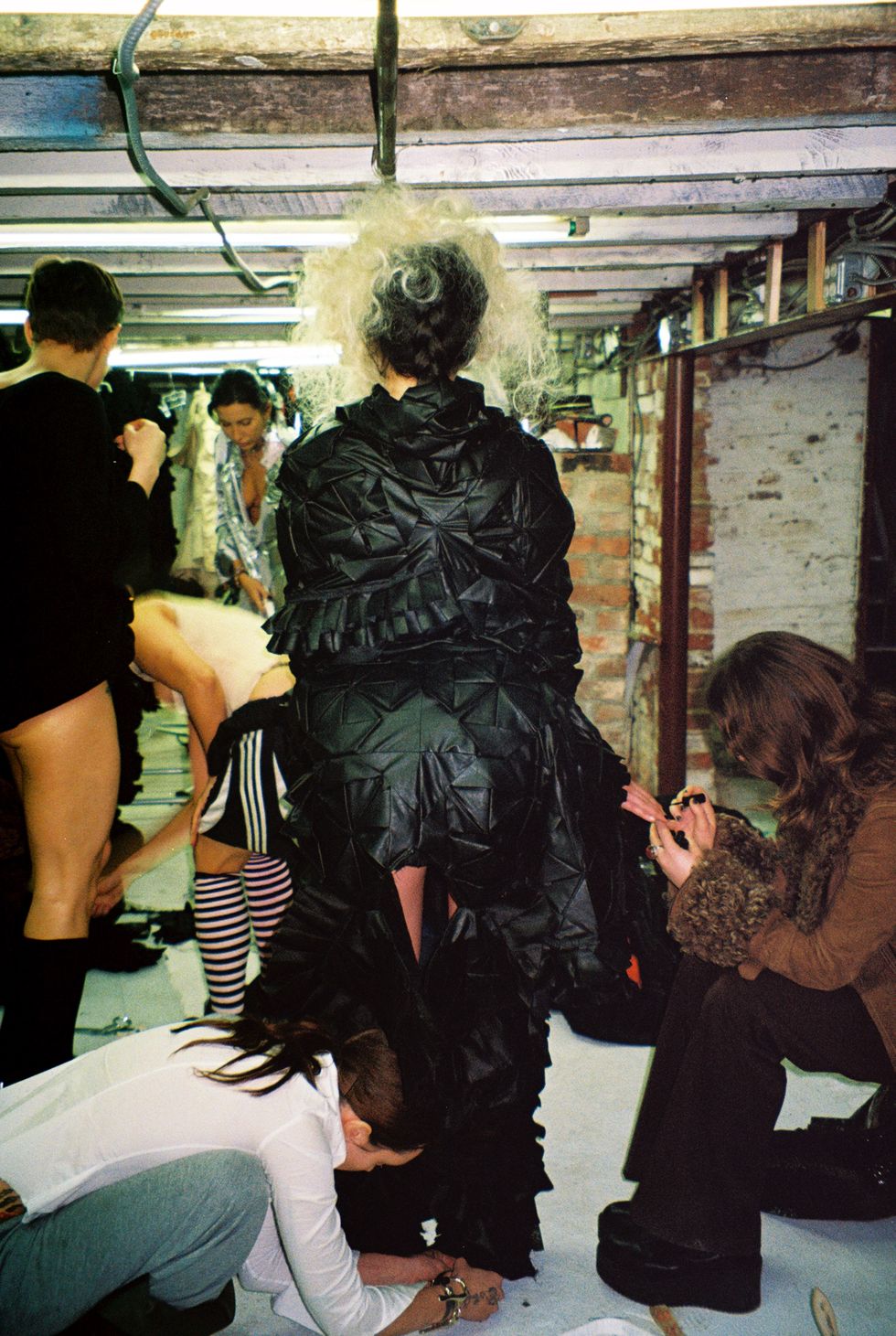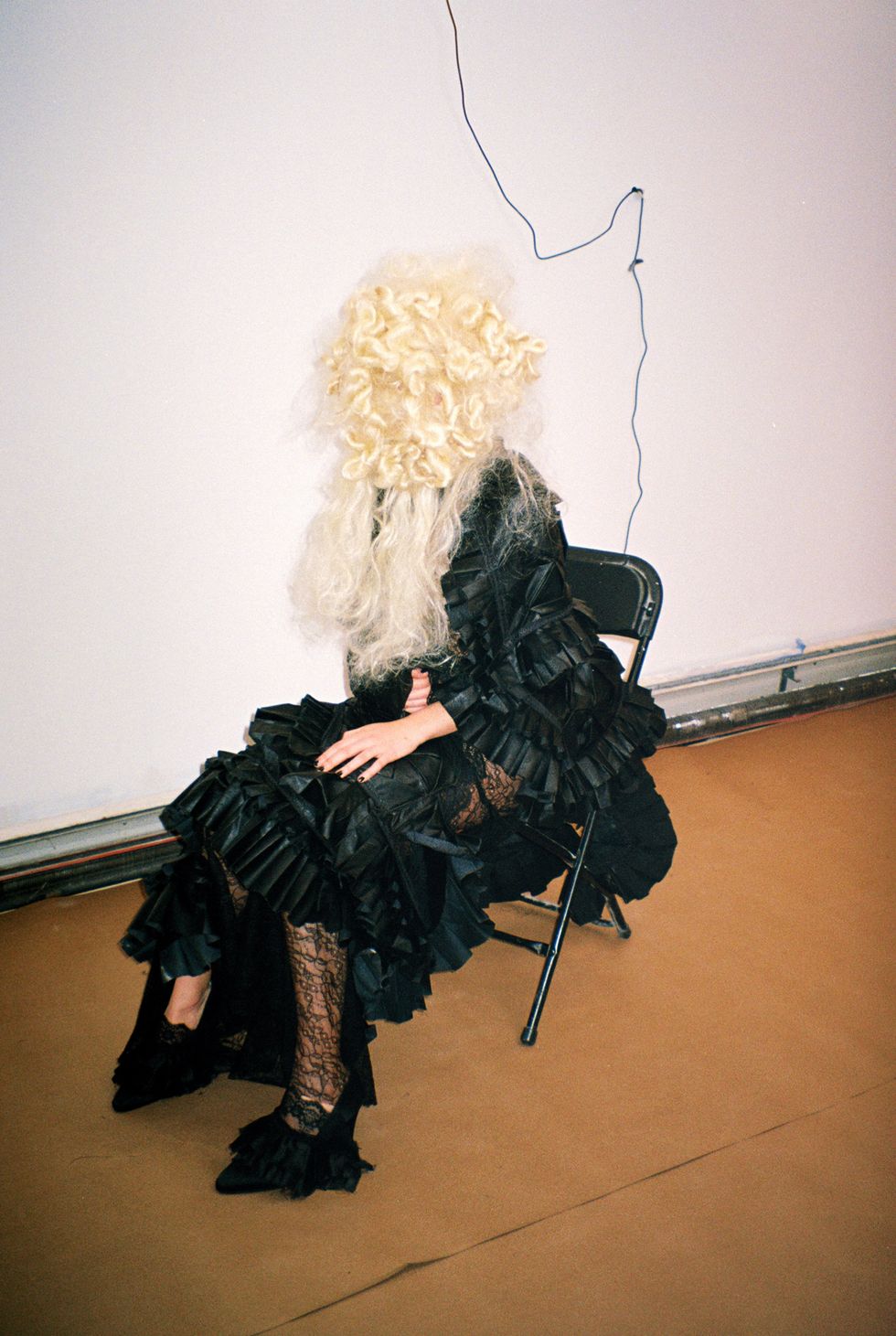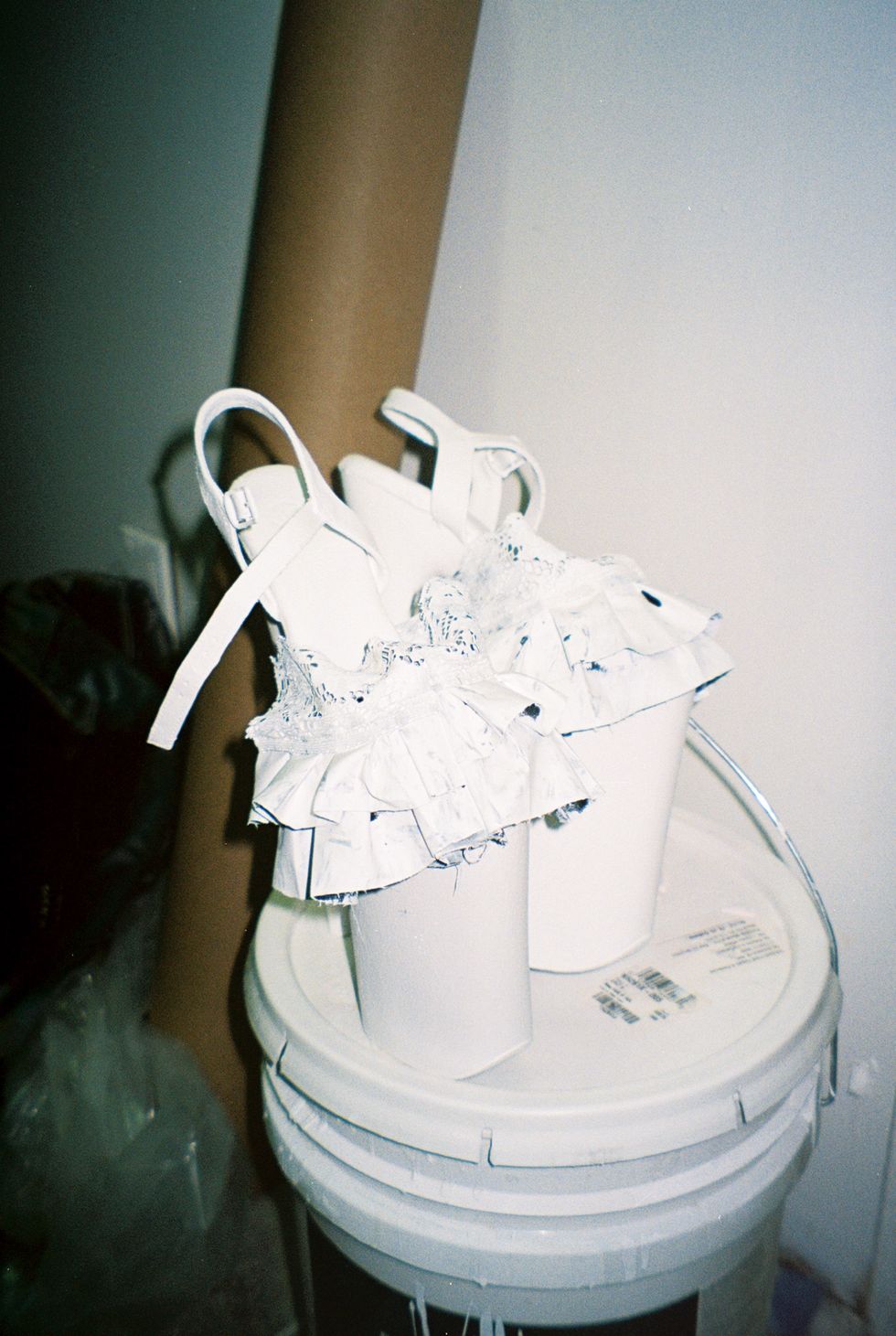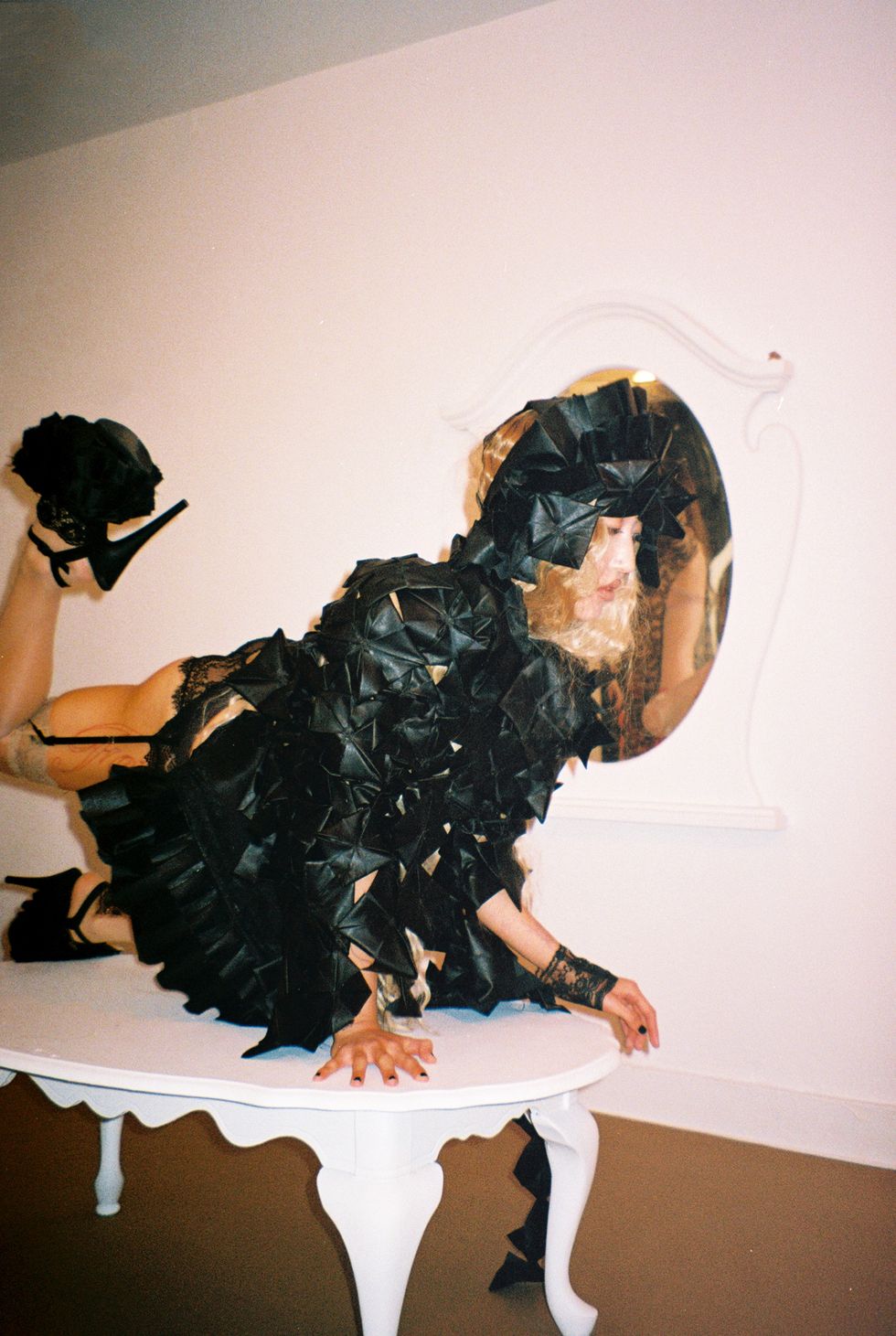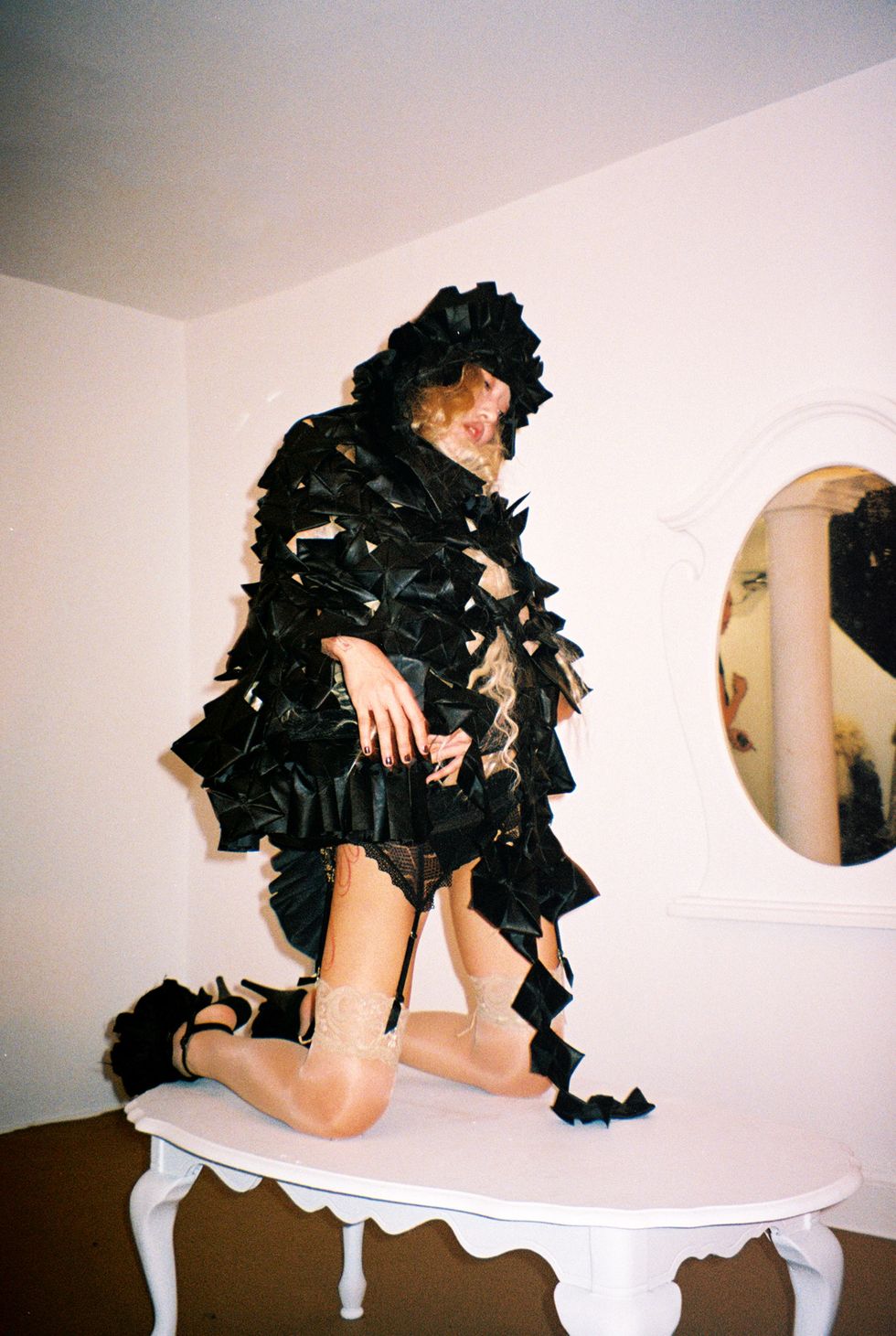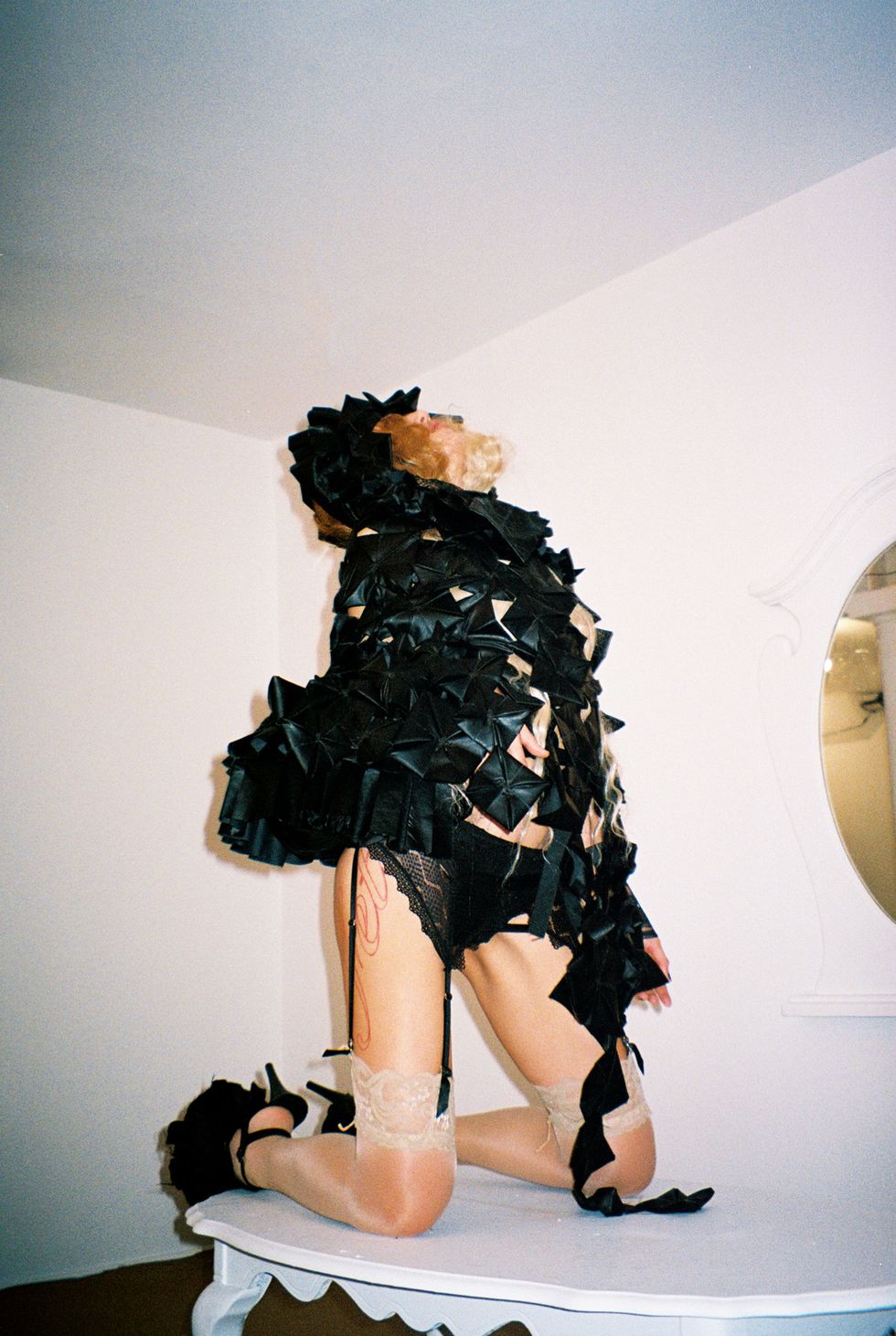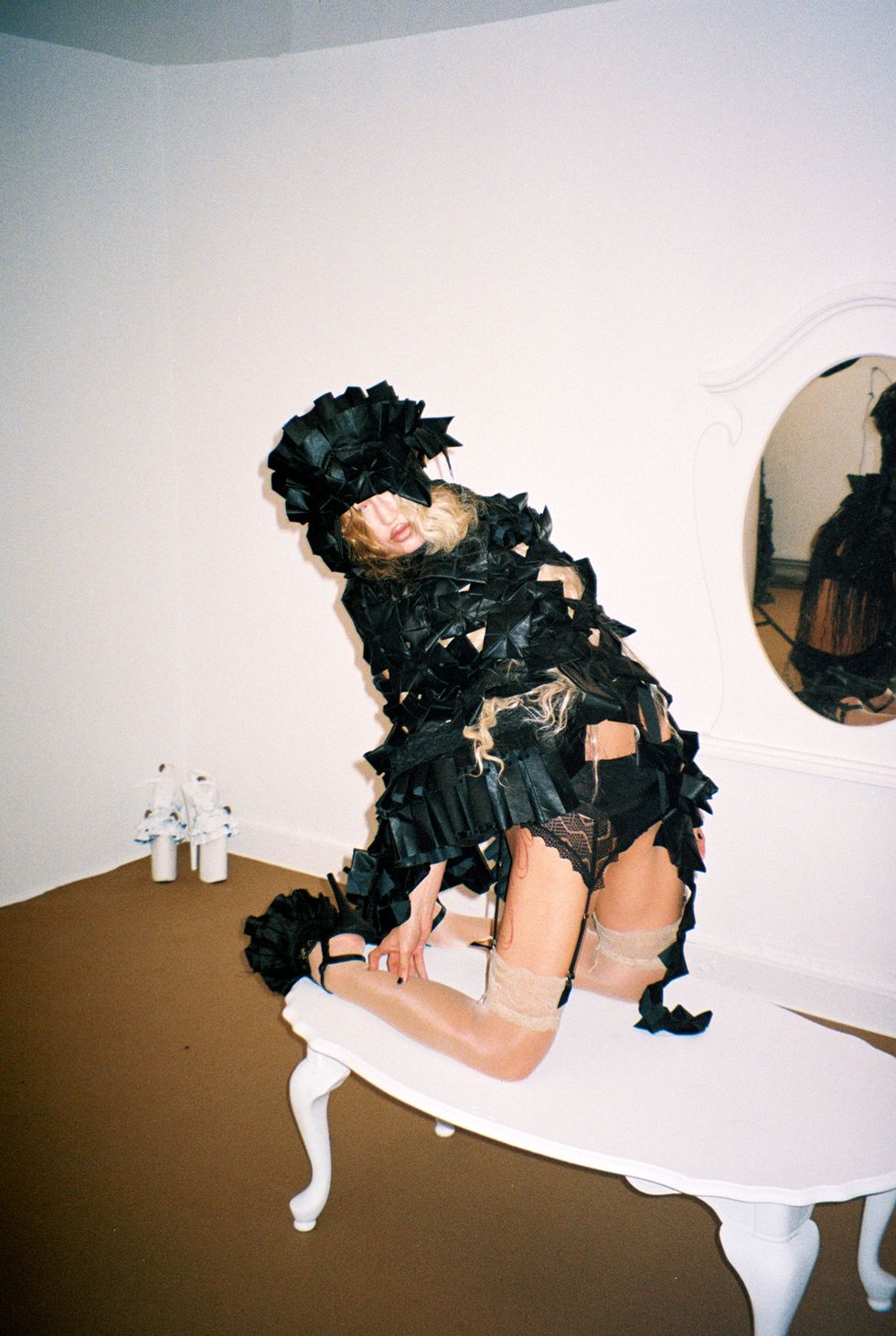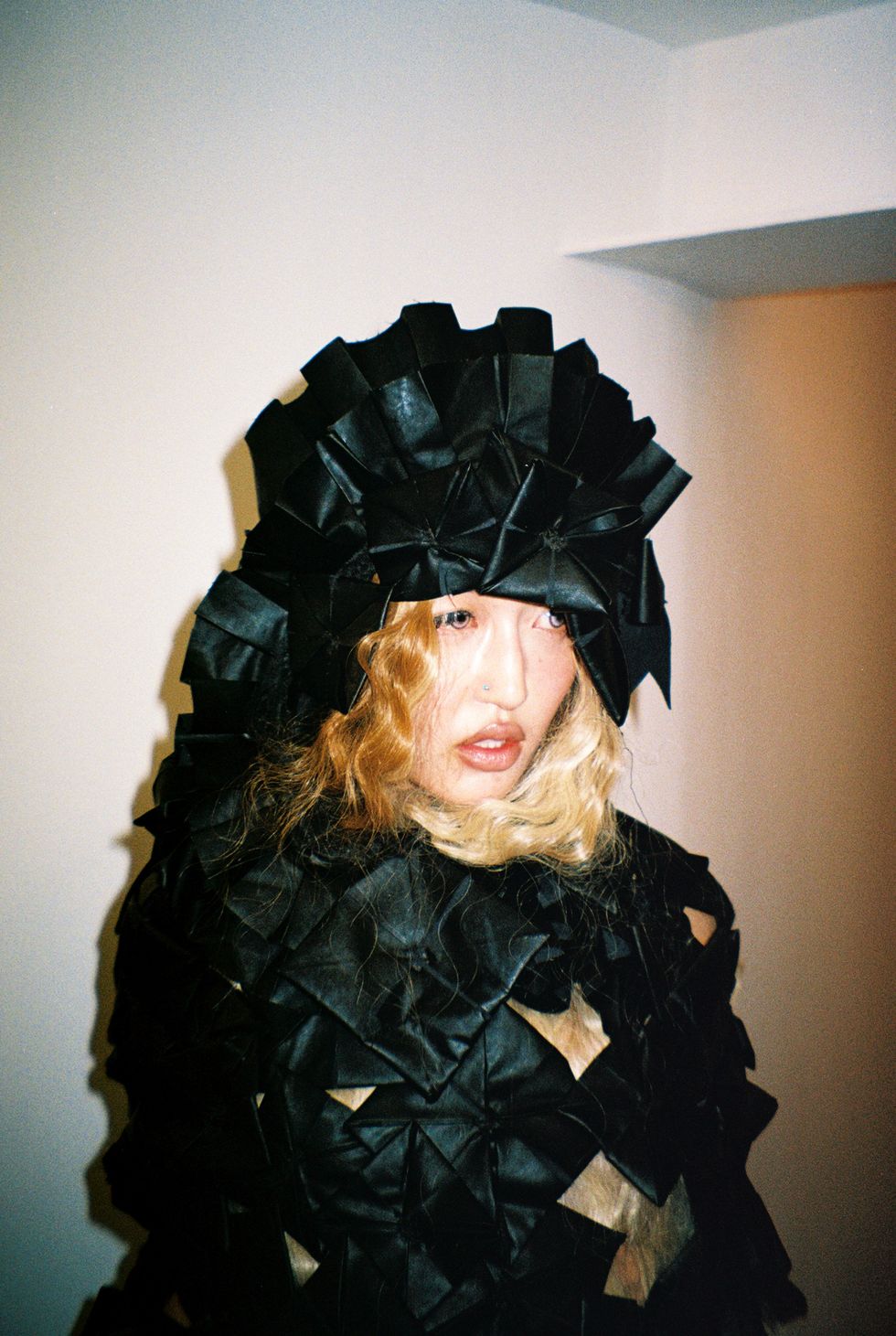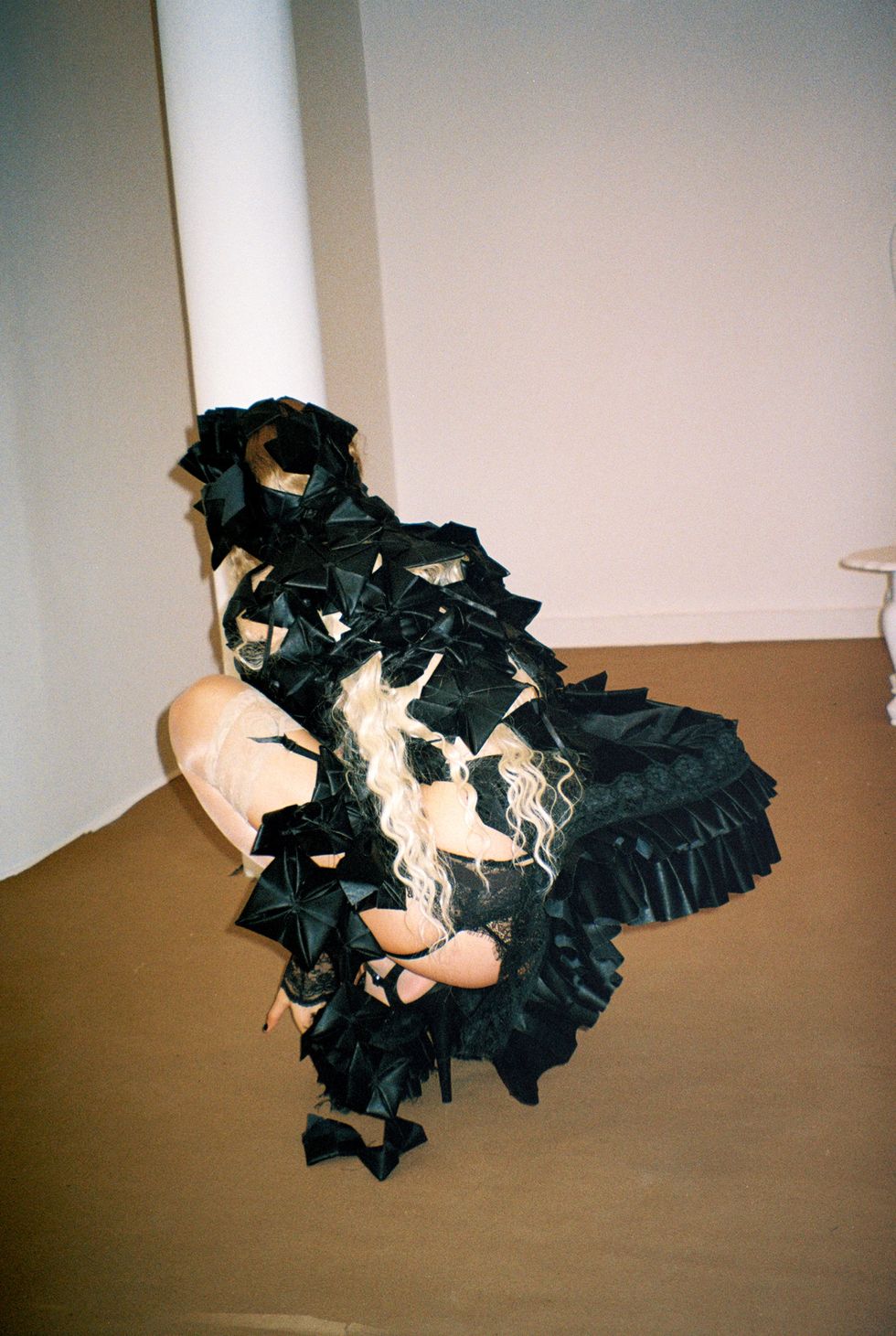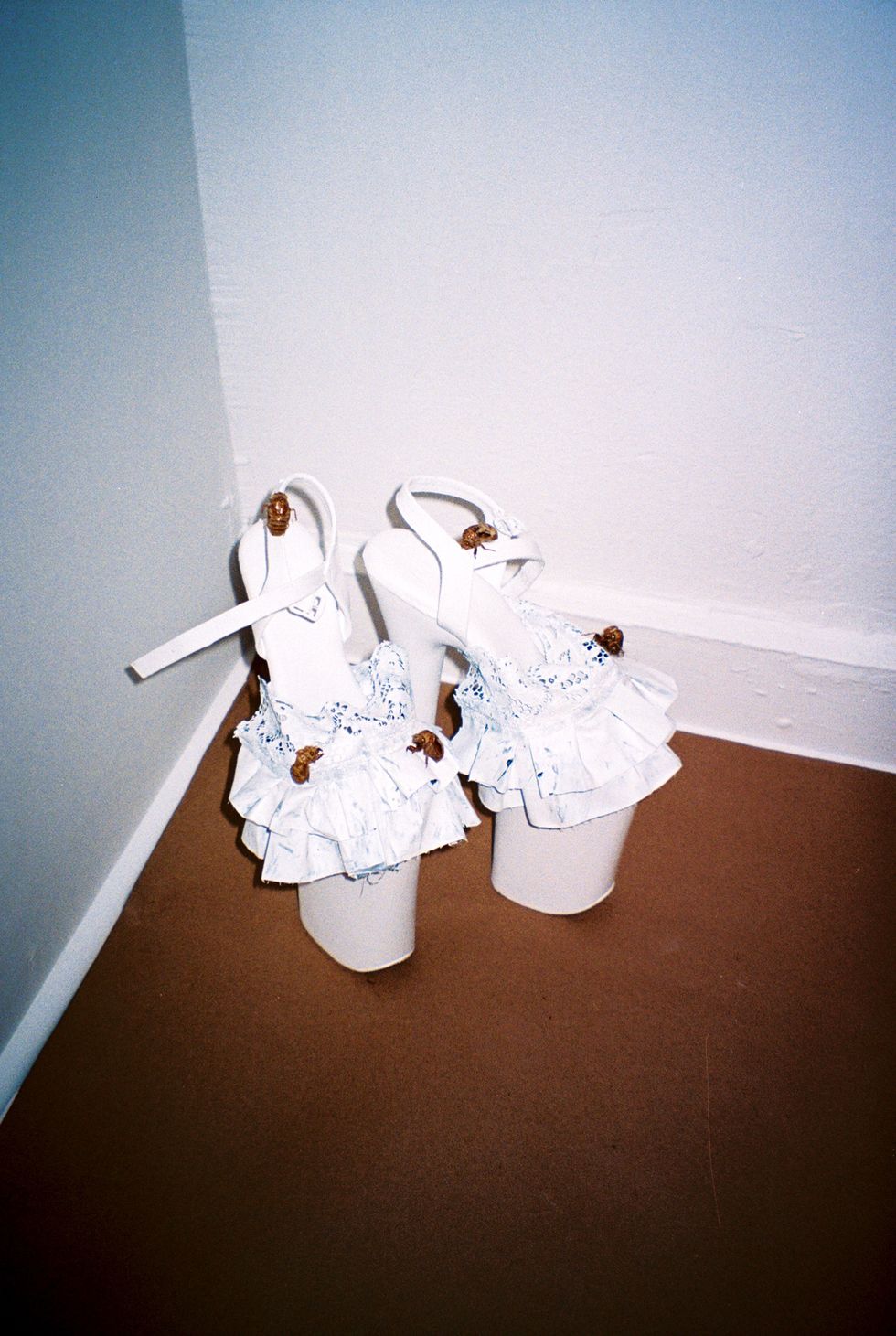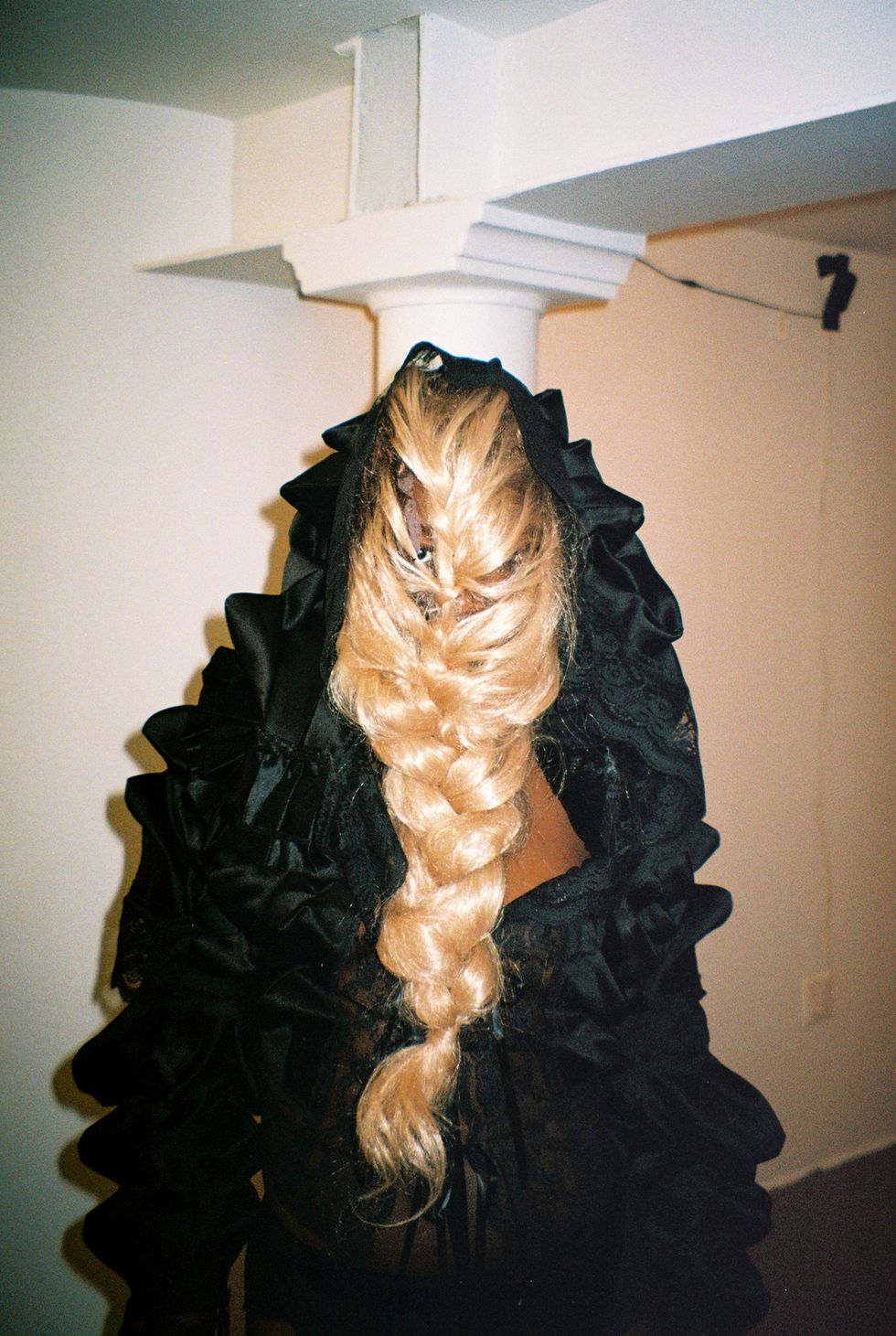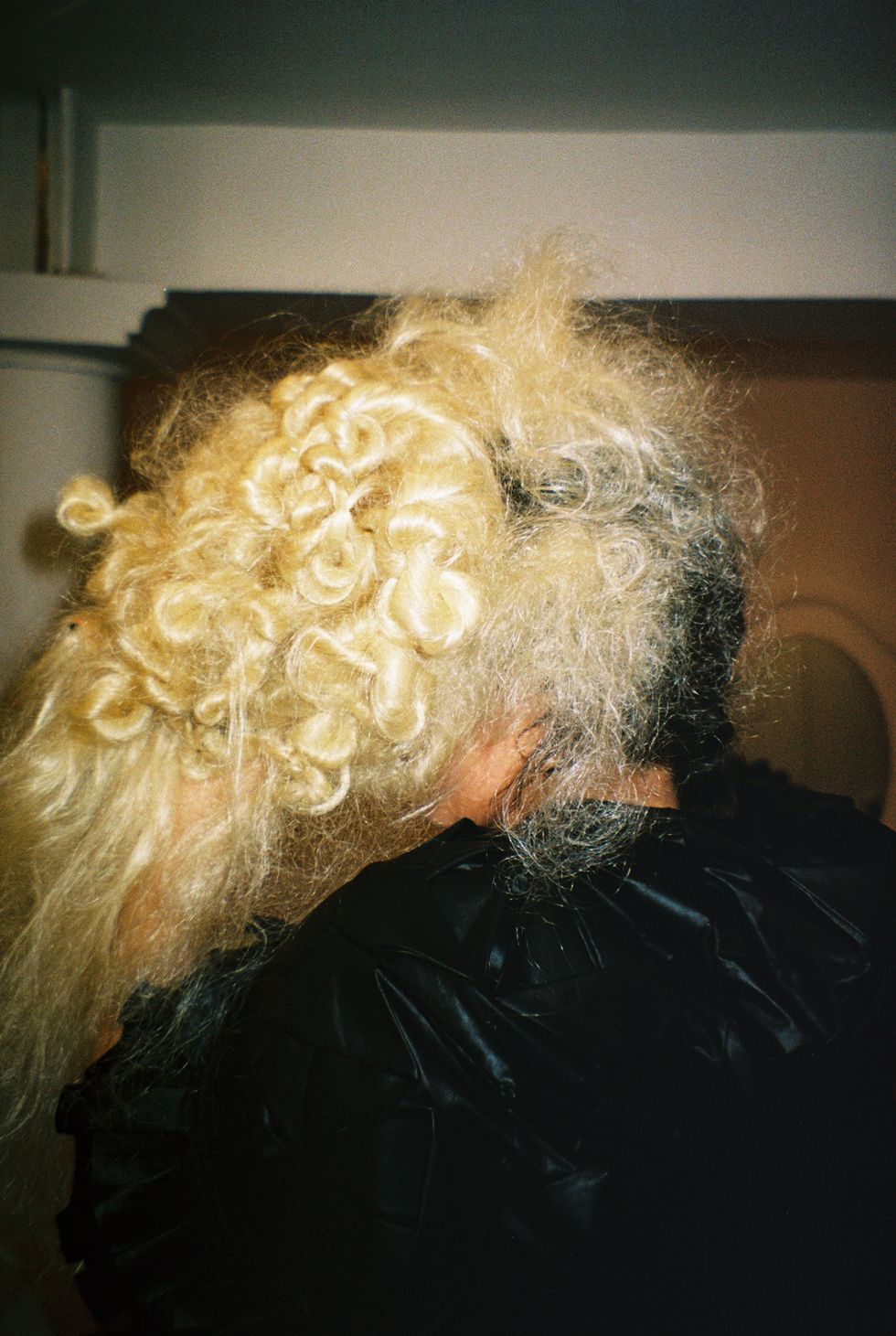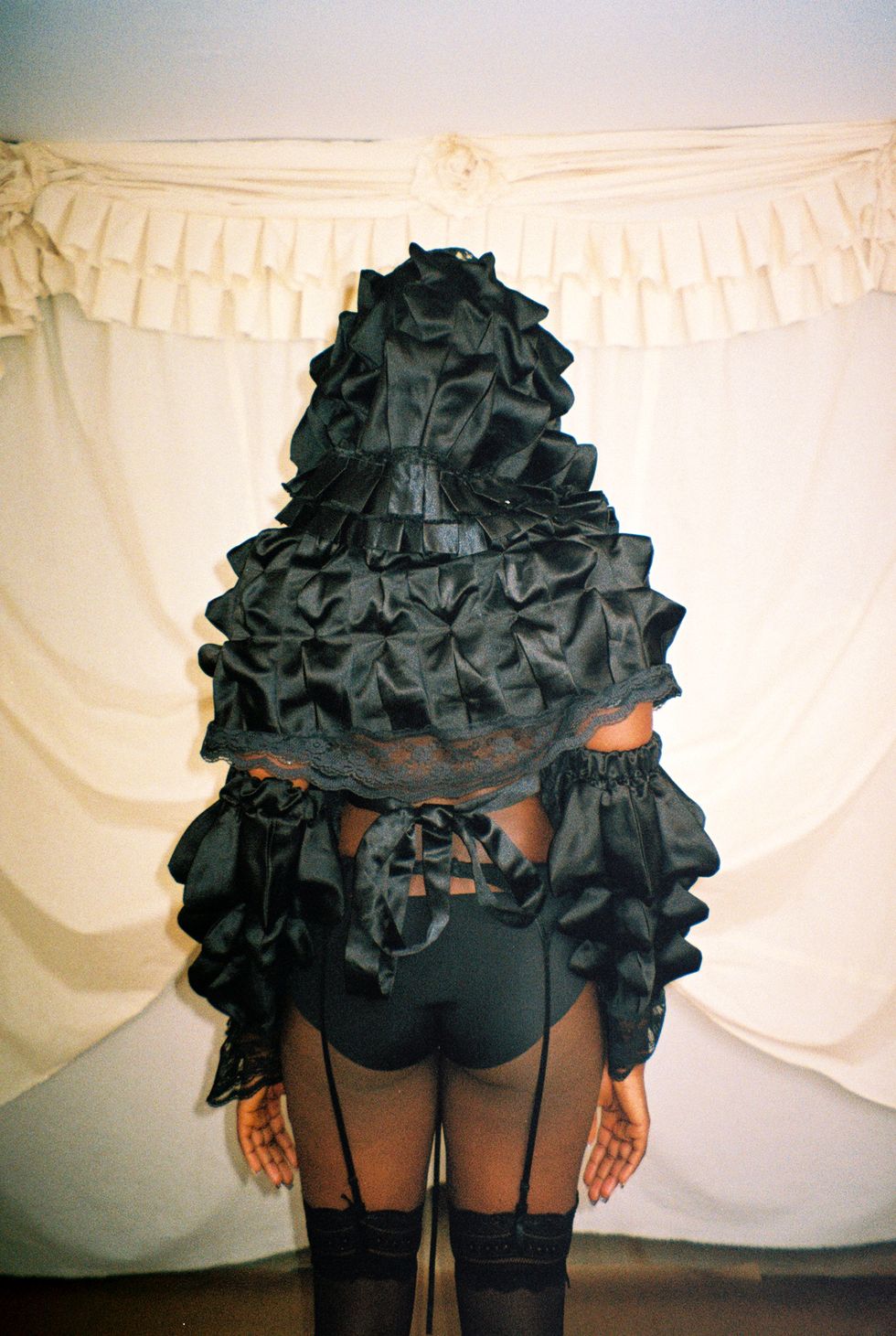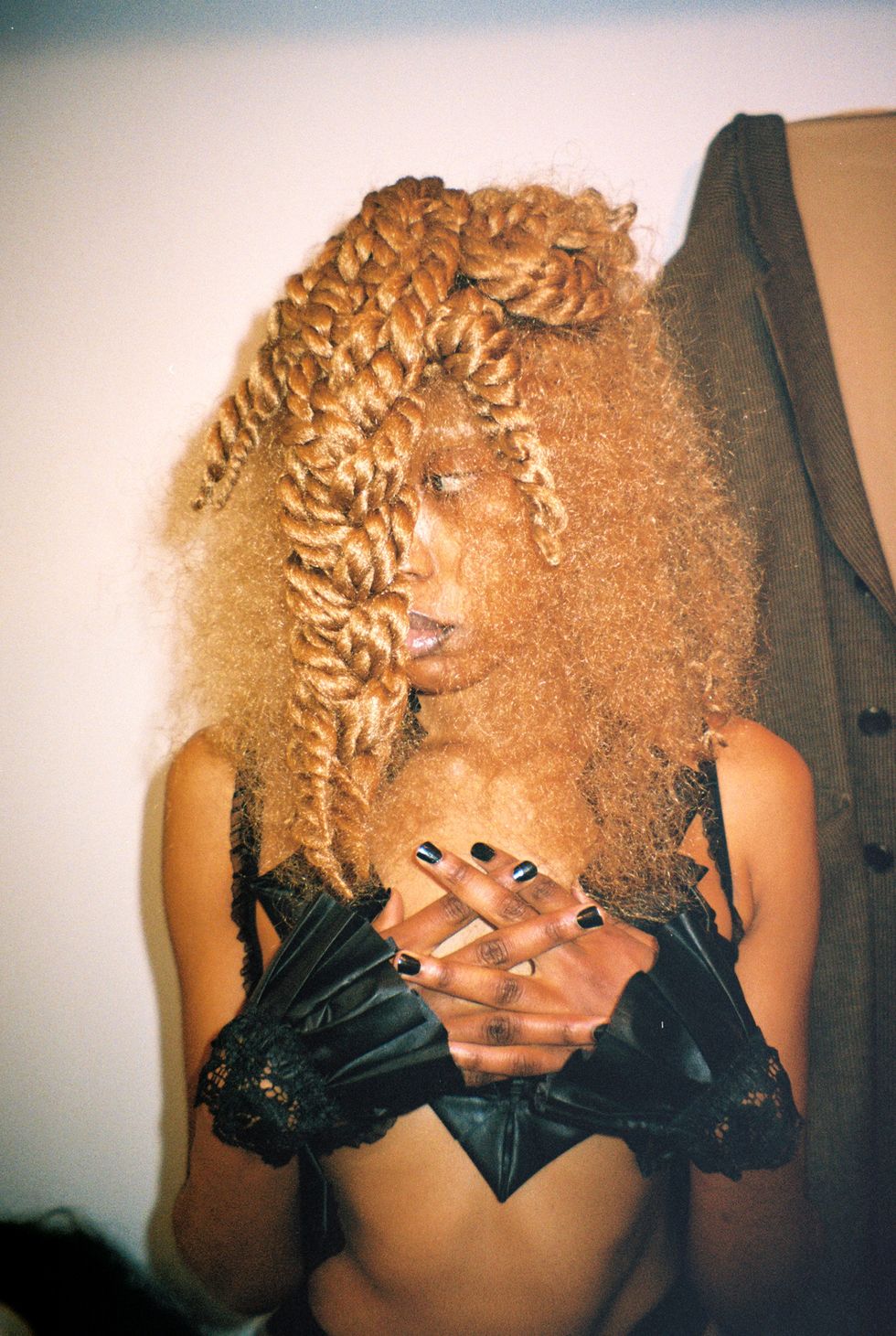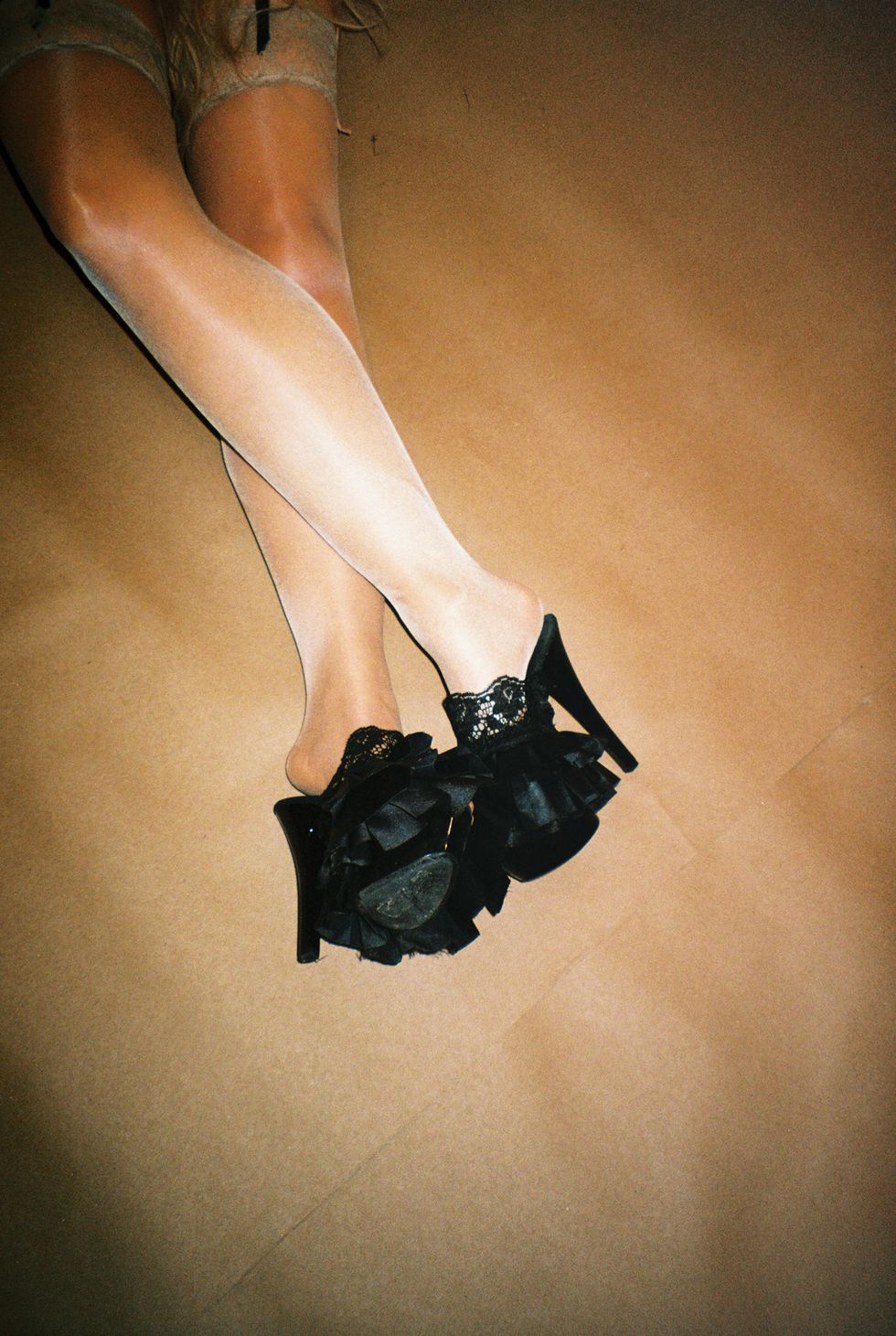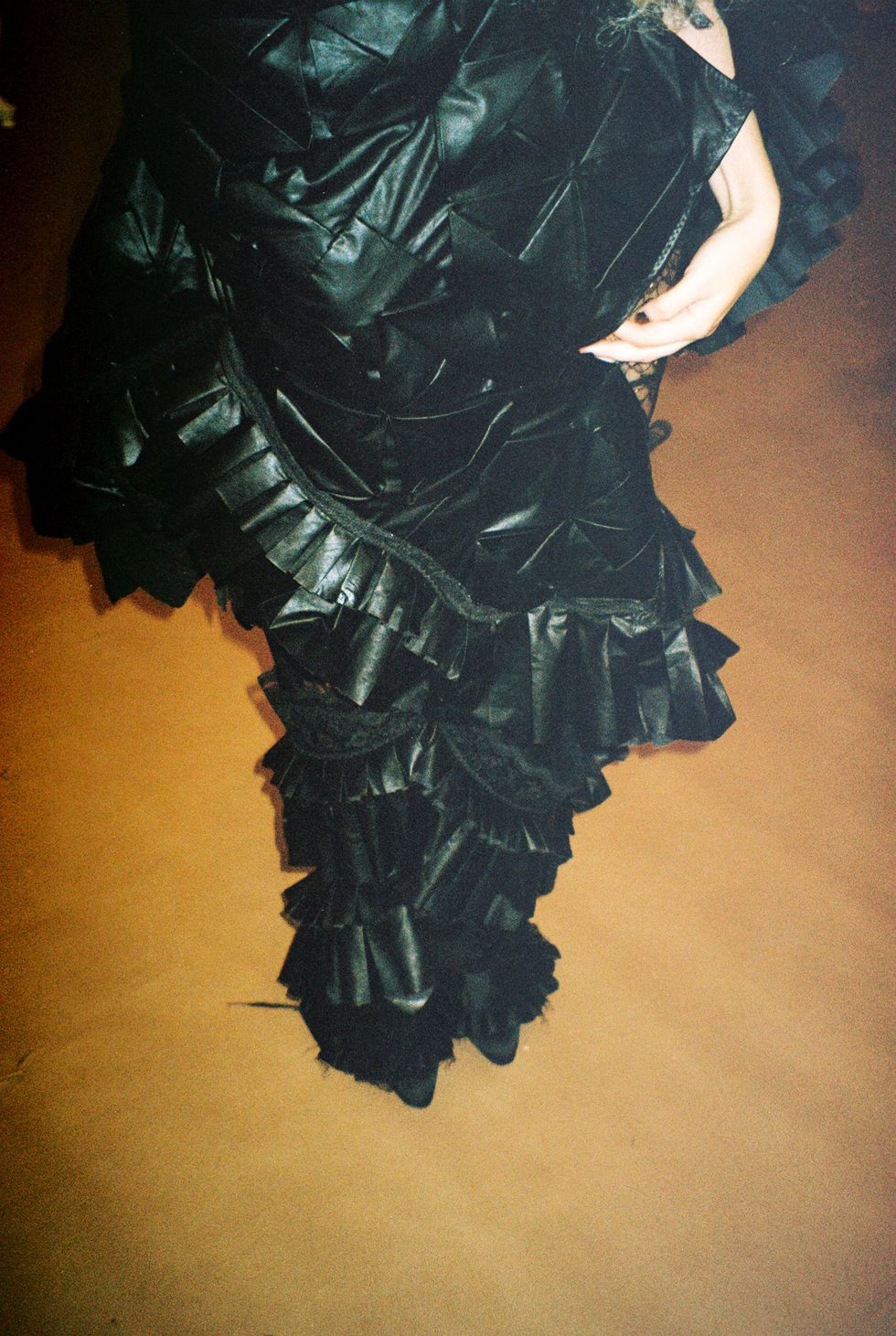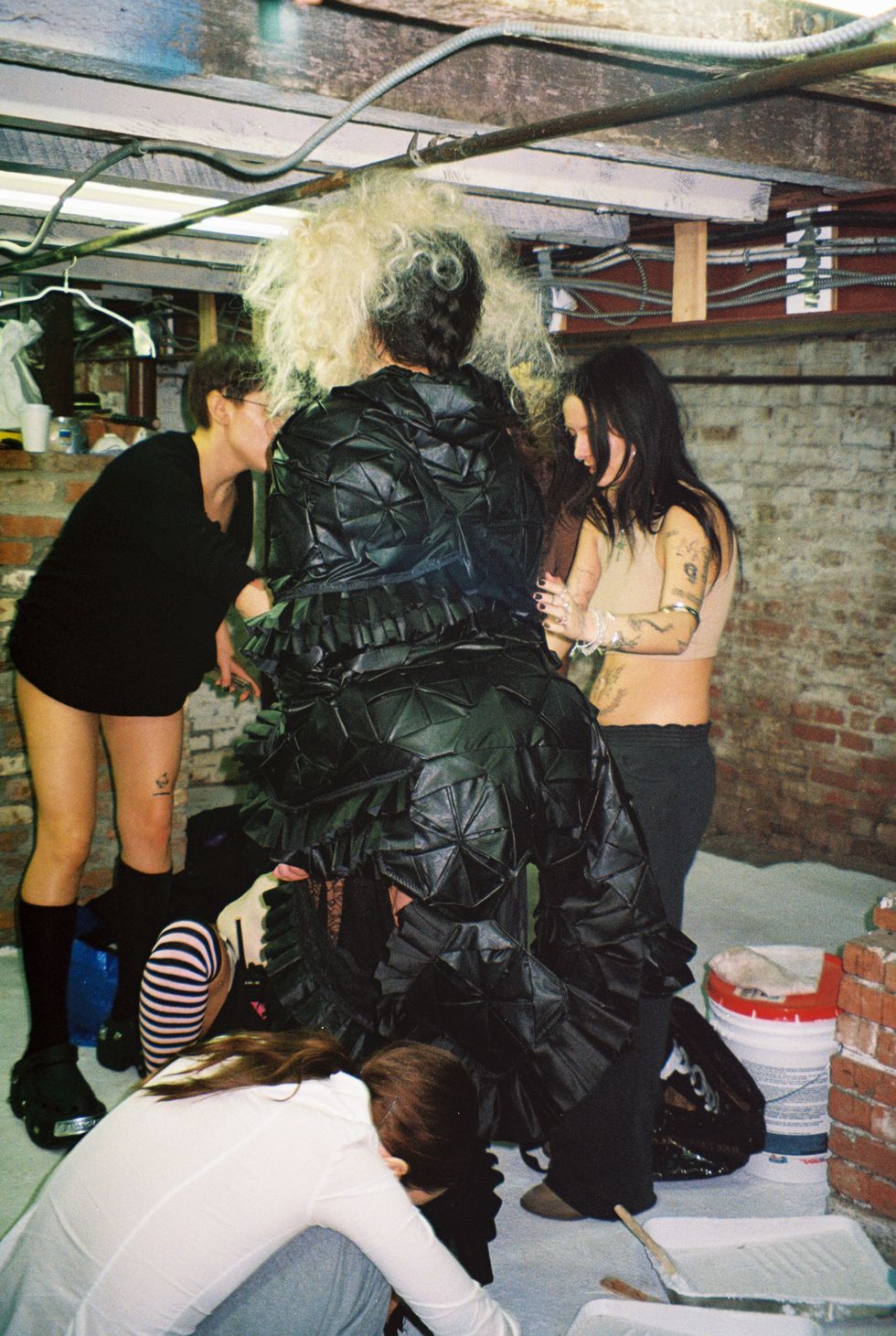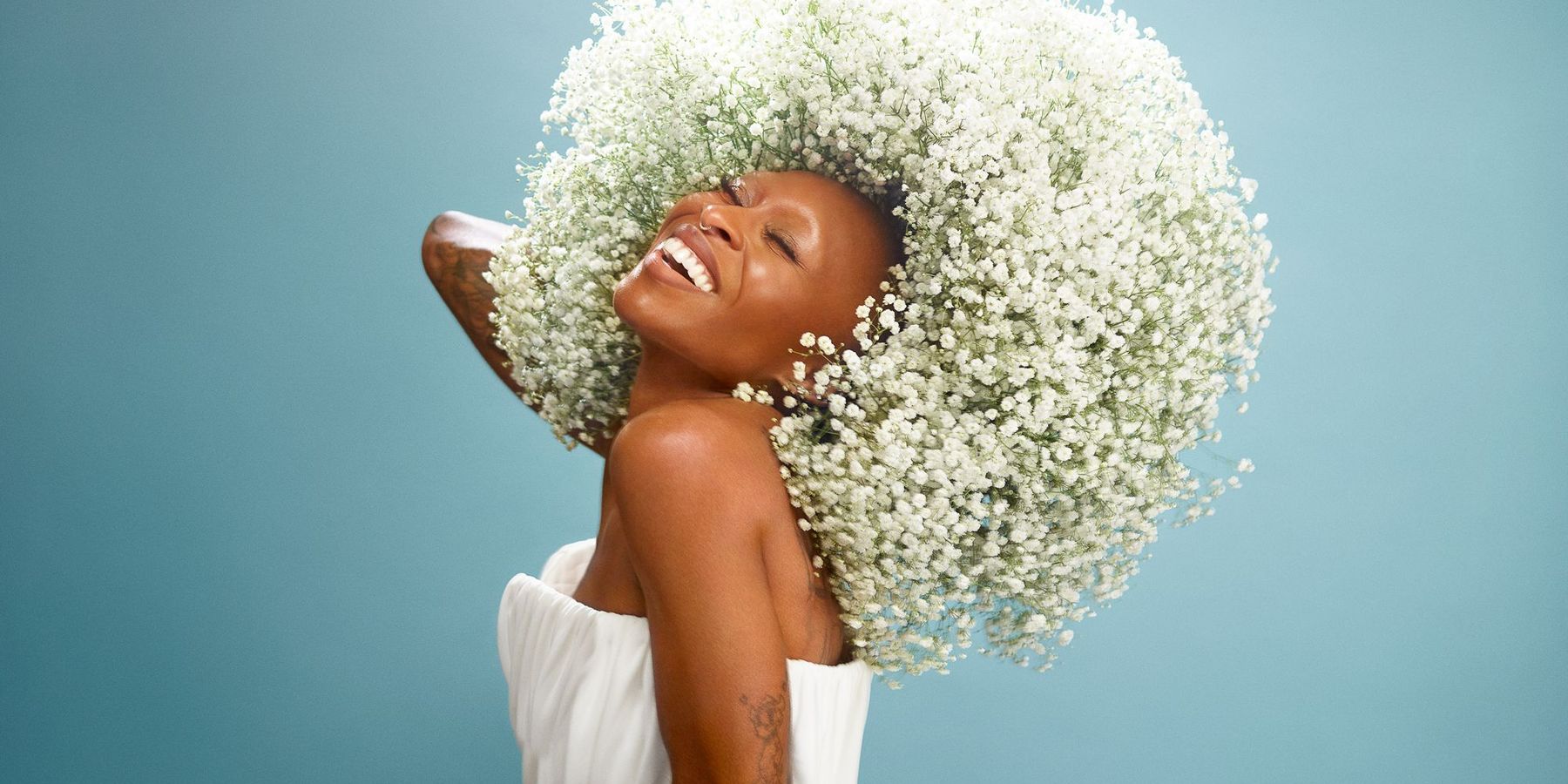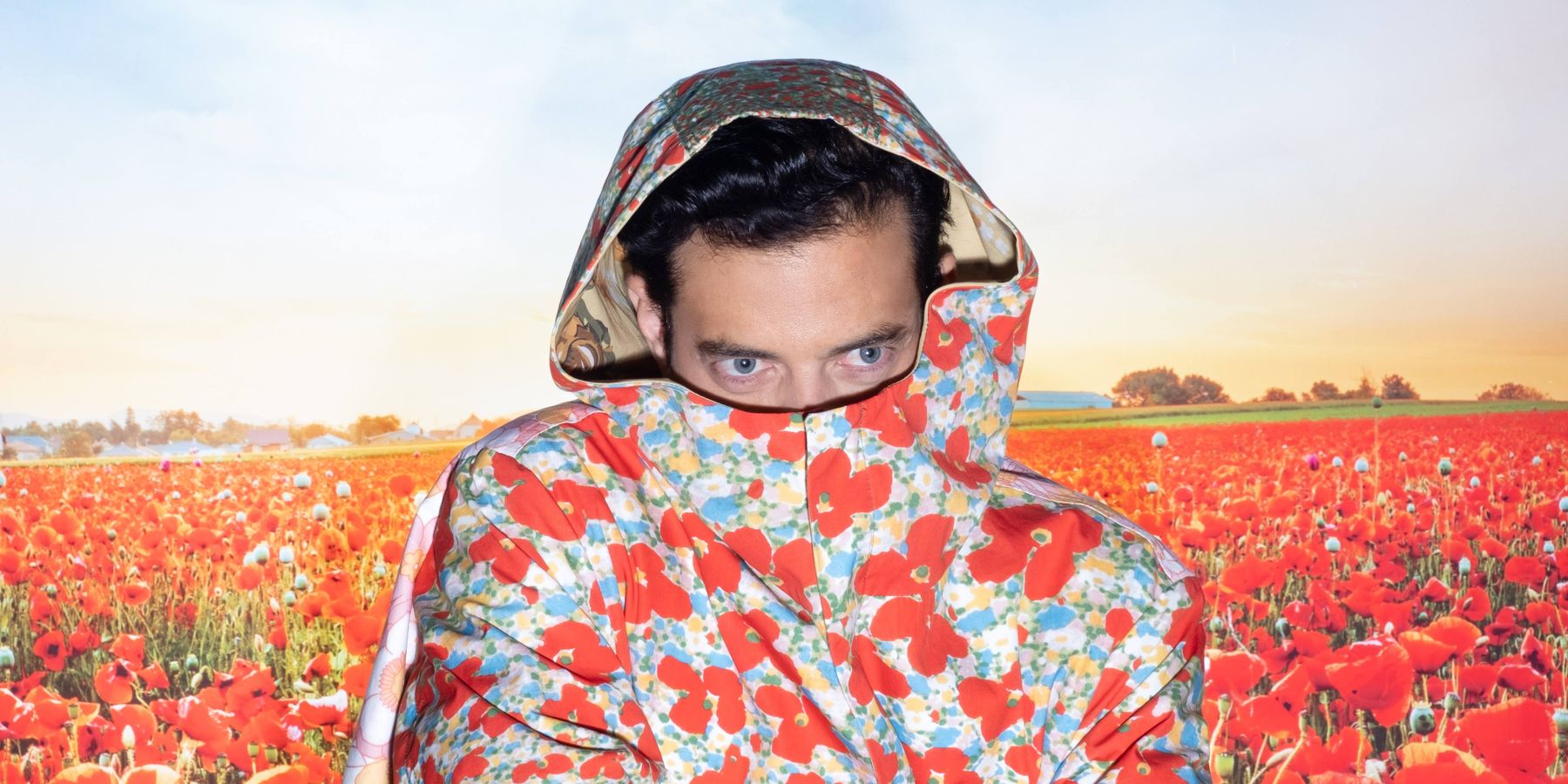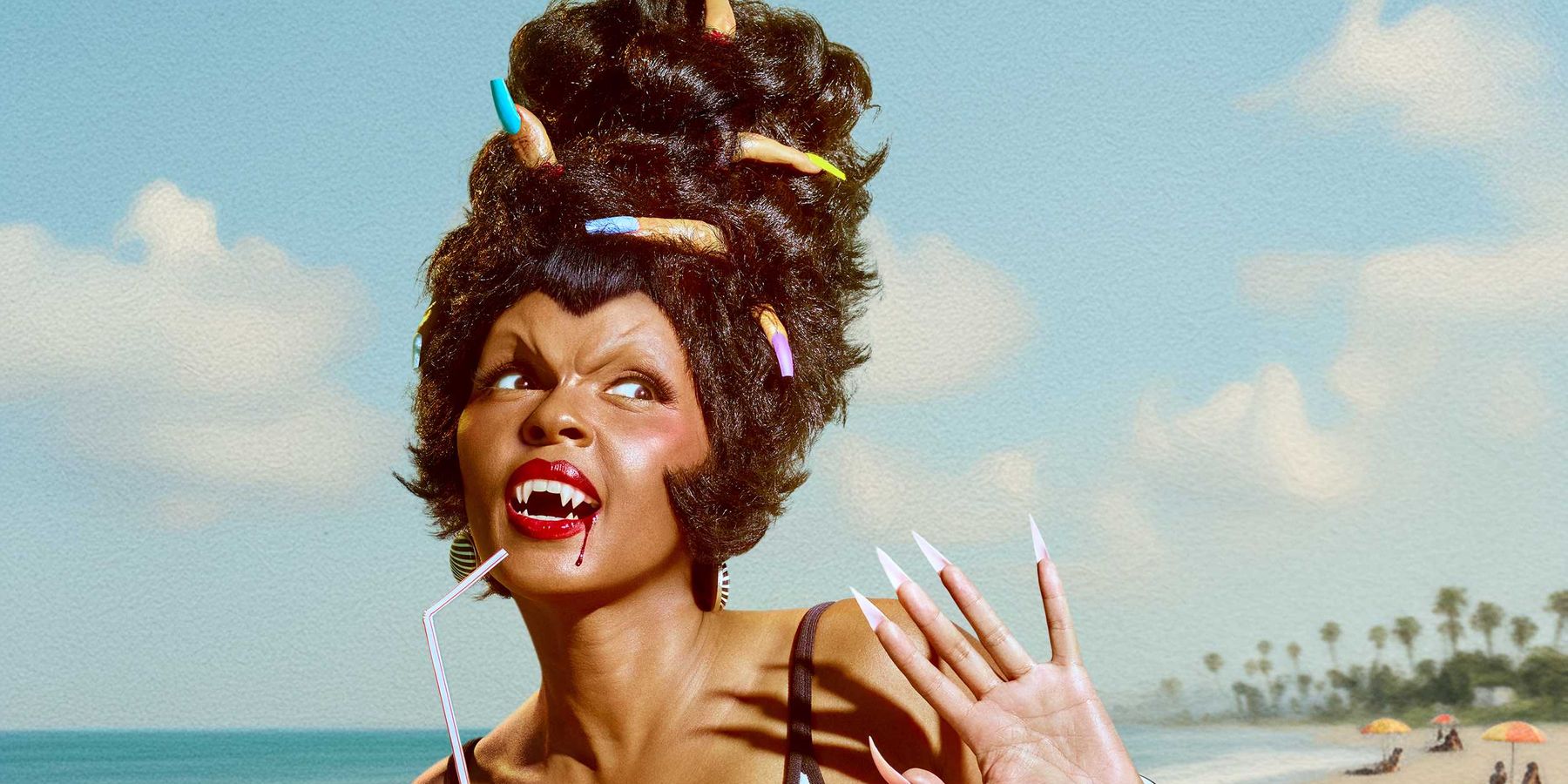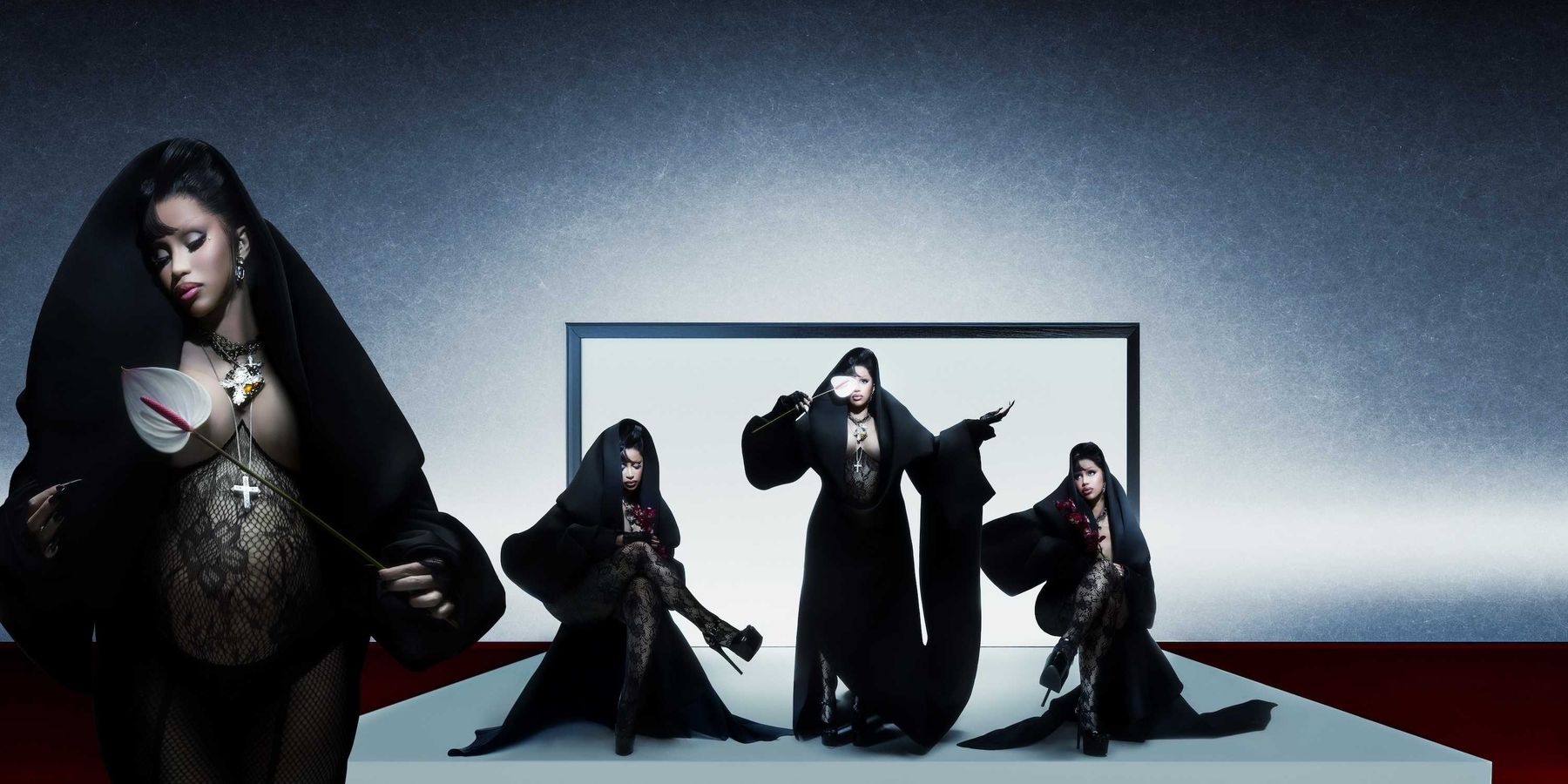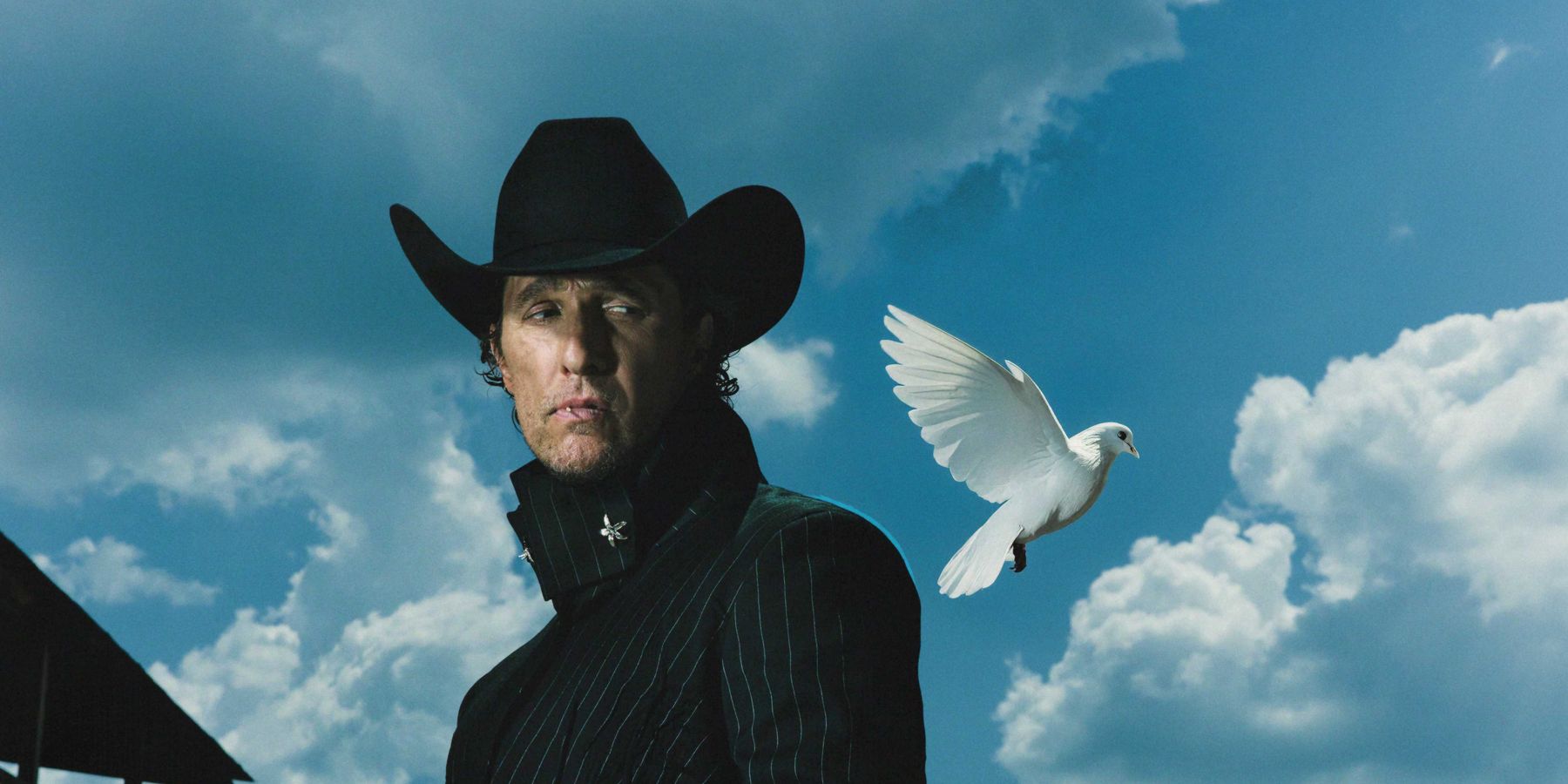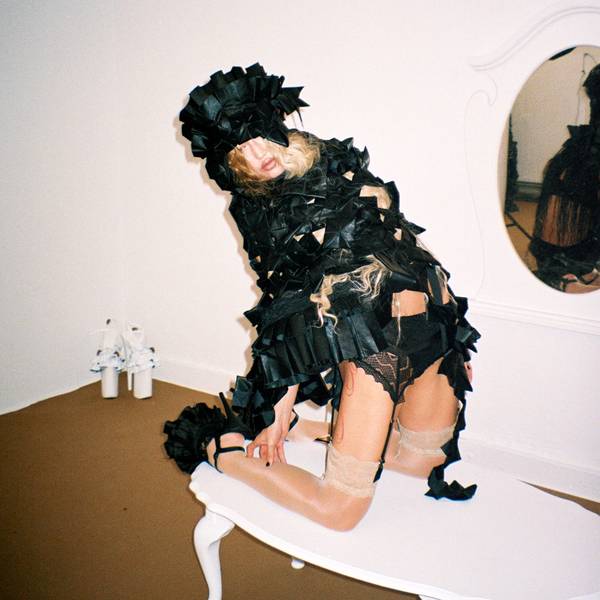
Romina Montserrat Brought Fantasy Back to New York
Story by Andrew Nguyen / Photography by Tyler Matthew Oyer
Feb 21, 2024
Romina Montserrat is the kind of person that was born to be a fashion designer. "I just want to live, creating and dreaming and designing until I die," she tells PAPER a couple of days after her show while she smokes a joint over video call.
New York Fashion Week, and fashion month in general, can be mind-numbing. It's difficult to pinpoint specific beautiful moments because you're assaulted with them. But I can't stop thinking about my time in the basement of a Lower East Side walkup on Hester Street, where Montserrat showed her collection.
Montserrat sort of creates modern day fairytales, and her medium is using fabric in interesting ways: collaging, origami and her own textile manipulation techniques. While her first collection that she showed in Paris was sexy and revealing, her second presentation (and first in New York) swung the other way, as her fairytale this time included women undergoing metamorphoses into insects. Origami pieces of silk satin and lace were constructed to create exaggerated hips and busts reminiscent of Victorian dresses, while revealing parts of the body still. Reflecting the mourning of being human and leaving it behind, Montserrat showed an entirely black collection of a few looks.
Below, PAPER caught up with Montserrat post-NYFW chaos to talk about getting her start on Depop, traveling back and forth from Peru to make it work and bringing fantasy back to New York Fashion Week.
How did you start your brand?
I just started doing clothing like two years ago, and I was in Peru selling my stuff but nobody had the money to buy the clothes. During the pandemic I opened my Depop account and posted my garments. I started selling so much to New York that I was like, “I have a future in fashion. I need to go to New York.” So I came a couple years ago, and I stayed at my Peruvian friend’s house, and she told me, “Why don't we do a showroom in the house.” All these people came, and they were the first clients that I had. They’re my friends now, and they’re the same people that helped me do the presentation. And then Sophia Boli from Retail Pharmacy also told me I can sell my stuff there. My connection with New York is very special, which is why I really enjoyed making this presentation — I literally work with the people that I met since I first arrived.
Wait, where do you live then?
I'm always coming back and forth from Peru to New York all the time. I came last year with a suitcase full of clothing and went to the Women’s History Museum pop up. They were like, “You can sell your stuff here."
Who are you as a designer?
I think it’s all about my own process. I always dream. As a designer, I’m just now having opportunities to express and develop the ideas that I’ve had in my head. I'm good with technique — it’s something that’s different about me. My pleating and origami techniques and the way I manipulate fabrics is something that I haven't seen much in fashion. I work with materials that I can afford. Then when I make the clothes, you don't even realize that it's a cheap material. I just want to get better and better, bigger and bigger.
This collection seems like a departure from your earlier, sexier stuff.
My Parisian show was almost like lingerie, so when I opened the casting here, girls thought they were going to be very sexy. But I literally covered their faces, which wasn’t expected, but at the same time, I still created a very strong feminine universe. This time, I tried to share my other side. I have a deep, dark romantic mood in my head constantly — I long all the time. There were like three years of my life when I was totally alone in a room writing and drawing and getting inspired by the night light that came through my windows. When I arrived in New York, I was a sublet at a place by Prospect Park. I was like, “Whoa, this is a forest.” I got very connected with nature in the middle of the city, and then I went to the woods in Woodstock. I connected with my inner self, and that was also something that I wanted to show this time.
And you were specifically inspired by ants?
I watched a documentary about a queen ant. After she mated, she had 1000 eggs but all the daughters she had were infertile so they only worked for her. I was like, “This is so interesting.” They live for her, feed her and create everything. I’ve loved and admired insects all my life because they literally look like aliens and are very organized. They just know what to do every day but in a beautiful madness. For me, they are like the future.
It made me imagine people who are bored of living as humans so they try to become insects. Their faces are covered with hair because they’re trying to be more introspective. It's more about their feelings and thoughts and how they want to create these shields. They are probably living in a Victorian time, which is the connection with the shapes. With the models you can see the process of becoming an insect: There’s one that’s more in a cocoon, one is just born, others that are reborn and changing their skin and one is fully the queen.
What’s your goal?
I want to be big. I want to be printed in history books. I want fashion. It’s what I dream about. My first contact with fashion was in library books about fashion at this university in Peru. I opened a book about Paul Poiret, and I was like, “I literally want this for me.” And it's not an ego thing. It's more because I want to create a life of this. I just want to live, creating and dreaming and designing until I die. It's something that connects me deeply to my inner self. I just want to get better and better and create more fantasy to share with people. I think that's my mission.
Fashion sometimes can be superficial, but we need architects of dreams. We need architects of fashion like John Galliano and Alexander McQueen — people who inspire us to keep living in this hard world. I want to be a part of that: creating something beautiful so people can find a more happy place to live. When I saw the Galliano show for Margiela, I cried. I realized that's what I want to achieve. We have two times in the year when we can dream. We are so lucky to be entertained and connect with beauty. Fashion was forgetting about that, and everything was so trendy and ready to wear. For the brand, I hope I can create things so beautiful that people can dream. It's good to dream. It's necessary to dream.
Photography: Tyler Matthew Oyer
MORE ON PAPER
Entertainment
Cynthia Erivo in Full Bloom
Photography by David LaChapelle / Story by Joan Summers / Styling by Jason Bolden / Makeup by Joanna Simkim / Nails by Shea Osei
Photography by David LaChapelle / Story by Joan Summers / Styling by Jason Bolden / Makeup by Joanna Simkim / Nails by Shea Osei
01 December
Entertainment
Rami Malek Is Certifiably Unserious
Story by Joan Summers / Photography by Adam Powell
Story by Joan Summers / Photography by Adam Powell
14 November
Music
Janelle Monáe, HalloQueen
Story by Ivan Guzman / Photography by Pol Kurucz/ Styling by Alexandra Mandelkorn/ Hair by Nikki Nelms/ Makeup by Sasha Glasser/ Nails by Juan Alvear/ Set design by Krystall Schott
Story by Ivan Guzman / Photography by Pol Kurucz/ Styling by Alexandra Mandelkorn/ Hair by Nikki Nelms/ Makeup by Sasha Glasser/ Nails by Juan Alvear/ Set design by Krystall Schott
27 October
Music
You Don’t Move Cardi B
Story by Erica Campbell / Photography by Jora Frantzis / Styling by Kollin Carter/ Hair by Tokyo Stylez/ Makeup by Erika LaPearl/ Nails by Coca Nguyen/ Set design by Allegra Peyton
Story by Erica Campbell / Photography by Jora Frantzis / Styling by Kollin Carter/ Hair by Tokyo Stylez/ Makeup by Erika LaPearl/ Nails by Coca Nguyen/ Set design by Allegra Peyton
14 October
Entertainment
Matthew McConaughey Found His Rhythm
Story by Joan Summers / Photography by Greg Swales / Styling by Angelina Cantu / Grooming by Kara Yoshimoto Bua
Story by Joan Summers / Photography by Greg Swales / Styling by Angelina Cantu / Grooming by Kara Yoshimoto Bua
30 September
